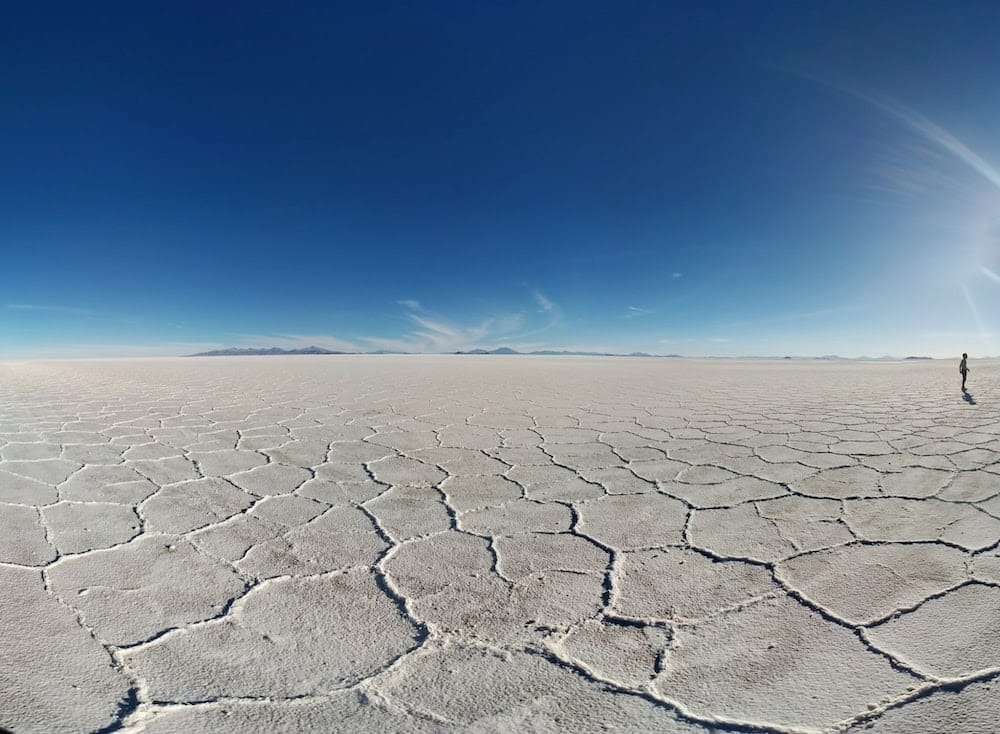
How do atmospheric aerosols modify the climate?
Aerosols linked to human activities are responsible for a cooling of the climate that has partially masked the warming due to the increase in anthropogenic greenhouse gases.
Atmospheric aerosols are small particles suspended in the atmosphere, with a lifetime of around 1 to 2 weeks in the troposphere (the lower part of the atmosphere) and 1 to 2 years in the stratosphere (the upper part of the atmosphere). There are many different types of aerosol. Some are naturally occurring, such as :
Sea salts
desert dust,
or chemical compounds emitted by the biosphere (biogenic aerosols).
Other aerosols are also of anthropogenic origin, such as :
sulfates,
soot
nitrates,
or aerosols from man-made vegetation fires.
Atmospheric aerosols vary greatly in concentration, size (from a few nanometers to several micrometers), chemical composition and shape.
Research shows that the Earth’s climate can change as a result of anthropogenic aerosols or changes in natural aerosols, which themselves respond to climate change. For example, we know that the disappearance of vegetation linked to reduced precipitation and the lowering of sea levels during the Ice Ages led to a considerable increase in desert dust in certain regions.
Aerosols scatter and absorb solar radiation
Aerosols modify the climate in several ways. Firstly, they scatter and absorb solar radiation, altering the planet’s radiation balance. This effect is known as the direct aerosol effect, and occurs mainly in the absence of clouds. Aerosol scattering deflects solar radiation in all directions. Some of this radiation is reflected back upwards, making the planet more reflective when seen from space and cooling the climate. On the other hand, the absorption of solar radiation by aerosols makes the planet darker, leading to a warmer climate.
Research shows that the Earth’s climate can change as a result of anthropogenic aerosols or changes in natural aerosols, which themselves respond to climate change. For example, we know that the disappearance of vegetation linked to reduced precipitation and the lowering of sea levels during the Ice Ages led to a considerable increase in desert dust in certain regions.
Aerosols scatter and absorb solar radiation
Aerosols modify the climate in several ways. Firstly, they scatter and absorb solar radiation, altering the planet’s radiation balance. This effect is known as the direct aerosol effect, and occurs mainly in the absence of clouds.
Aerosol scattering deflects solar radiation in all directions. Some of this radiation is reflected back upwards, making the planet more reflective when seen from space and cooling the climate. On the other hand, the absorption of solar radiation by aerosols makes the planet darker, leading to a warmer climate.
All aerosols both scatter and absorb solar radiation, but in widely varying proportions. Sulfate aerosols, which form as a result of sulfur emissions from coal and oil combustion, are particularly scattering, while soot, which comes from incomplete combustion, is highly absorptive.
Whether cooling or heating prevails depends on the aerosol’s optical properties and the surrounding conditions. Numerous observations and modeling studies have made it possible to quantify the direct effect of natural and anthropogenic aerosols. Although uncertainties remain, it is believed that anthropogenic aerosols have contributed to cooling the climate through their direct effect since the beginning of the industrial era.
Forster, P. M. de F. et al, “Changes in atmospheric constituents and in radiative forcing”, in: Climate Change 2007: The Physical Science Basis. Contribution of Working Group I to the Fourth Assessment Report of the Intergovernmental Panel on Climate Change, Cambridge University Press, pp. 129-234, 2007.
One of the remaining grey areas concerns the vertical distribution of absorbing aerosols, which is difficult to measure, and which induces a specific response in cloud cover. The effect of absorbing aerosols on clouds is sometimes referred to as the semi-direct effect.
As aerosols are very inhomogeneously distributed in the atmosphere, due to their short lifetimes, they can cool the climate in some places, warm it in others, and induce subtle changes in atmospheric currents and precipitation. These effects are difficult to observe and model, given the great variability of the climate, but several studies predict, for example, changes in the positioning and intensity of monsoons due to anthropogenic aerosols.
Randles, C. A. and V. Ramaswamy, 2008: Absorbing aerosols over Asia: A Geophysical Fluid Dynamics Laboratory general circulation model sensitivity study of model response to aerosol optical depth and aerosol absorption, Journal of Geophysical Research, 113, D21203.
Indirect effects of aerosols on clouds
Aerosols can also act as condensation or icing nuclei for the formation of cloud water droplets and ice crystals. As there are always condensation nuclei in the atmosphere, cloud formation is primarily controlled by dynamic processes, but aerosols can have an effect on the microphysical properties of clouds, such as the number and size of water droplets.
Higher aerosol concentrations tend to produce liquid water clouds with smaller and more numerous droplets. This and other more complicated effects, collectively known as the indirect effects of aerosols on clouds, modify cloud properties and the amount of radiation they reflect back into space. Indirect effects also modify the properties of ice clouds and so-called mixed clouds, which contain water in both liquid and ice form. Quantifying these indirect effects is more difficult than for the direct effect, but existing studies suggest that indirect effects also contribute to cooling the climate.
Denman, K. L. et al, Couplings Between Changes in the Climate System and Biogeochemistry, in: Climate Change 2007: The Physical Science Basis. Contribution of Working Group I to the Fourth Assessment Report of the Intergovernmental Panel on Climate Change [Solomon, S. et al. (eds.)]. Cambridge University Press, Cambridge, United Kingdom and New York, NY, USA.
Historical variations in aerosols
Because of their short lifetimes, aerosols have concentrations and climatic effects that vary in tandem with their emissions. The latter have risen sharply since the beginning of the industrial era.
Sulphur aerosol emissions, for example, have quadrupled since the start of the industrial era.
Sulphur aerosol emissions, for example, have quadrupled since the beginning of the industrial era.
As a result, aerosols have masked part of the global warming caused by anthropogenic greenhouse gases, the signature of which can be seen in observations. Volcanic eruptions can also inject aerosols into the stratosphere, inducing sporadic coolings such as those that followed the eruptions of El Chichón (Mexico, 1982) and Pinatubo (Philippines, 1991).
Aerosol emissions have undergone contrasting regional variations over the last two decades: decreasing in industrialized countries, due to policies to improve air quality, and increasing in developing countries. As a result, it is difficult to know whether aerosols have contributed to recent climate warming or cooling. It is likely that anthropogenic aerosol emissions will ultimately decrease on a global scale. We can then expect warming to accelerate.
Can natural aerosols change?Climate change may interfere with the atmospheric cycle of natural aerosols such as mineral dust, sea salts or biogenic aerosols. Although they do not agree with each other, existing studies tend to show that these effects will not induce a significant climate feedback over the next century.
Carslaw, K. et al., 2010: Aerosol in the Earth System: A review of processes and feedbacks, Atmospheric Chemistry and Physics, 10, 1701-1737.
In the long term, therefore, the magnitude of climate change will depend essentially on greenhouse gas emissions and the sensitivity of the climate to this disturbance.




